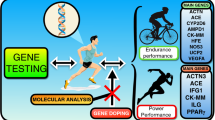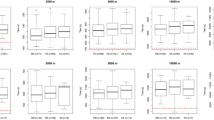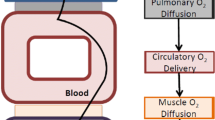Abstract
A look at the medal podium in almost any international sporting competition reveals that some athletes and certain countries enjoy regular success in particular events. While environmental influences such as training and diet are important, it is likely that there is also some genetic component to elite athletic performance. One of the most compelling examples of athletic domination is that of east African runners in international distance running competition. This phenomenon has led to the suggestion that east Africans possess some inherent genetic advantage predisposing them to superior athletic performances. The concurrent success of athletes of west African ancestry in sprint events also appears to have augmented this belief given their similar skin colour. A growing body of evidence suggests that genetic variation does influence athletic performance, yet despite the speculation that African athletes have a genetic advantage for physical performance, there is no genetic evidence to suggest that this is the case. The only available genetic studies of elite African athletes do not find that these athletes possess a unique genetic makeup; rather, they serve to highlight the high degree of genetic diversity in east African populations and also among elite east African athletes.

Similar content being viewed by others
References
Rankinen T, Bray MS, Hagberg MS, et al. The human gene map for performance and health-related fitness phenotypes: the 2005 update. Med Sci Sports Exerc 2006; 38 (11): 1863–88
Onywera VO, Scott RA, Brit MK, et al. Demographic characteristics of elite Kenyan endurance runners. J Sports Sci 2006; 24 (4): 415–22
Scott RA, Georgiades E, Wilson RH, et al. Demographic characteristics of elite Ethiopian endurance runners. Med Sci Sports Exerc 2003; 35 (10): 1727–32
Weston AR, Mbambo Z, Myburgh KH. Running economy of African and Caucasian distancerunners. Med Sci Sports Exerc 2000; 32 (6): 11304
Anna PF, Simoneau JA, Boulay MR, et al. Skeletal muscle characteristics in sedentary black and Caucasian males. J Appl Physiol 1986; 61 (5): 1758–61
Larsen HE, Nolan T, Borch C, et al. Training response of adolescent Kenyan town and village boys to endurance running. Scand J Med Sci Sports 2005; 15 (1): 48–57
Founder M, Ricci J, Taylor AW, et al. Skeletal muscle adaptation in adolescent boys: sprint and endurance training and detraining. Med Sci Sports Exerc 1982; 14: 453–6
Salon B, Larsen H, Terrados N, et al. Aerobic exercise capacity at sea level and at altitude in Kenyan boys, junior and senior runners compared with Scandinavian runners. Scand J Med Sci Sports 1995; 5 (4): 209–21
Scott RA, Wilson RH, Goodwin WH, et al. Mitochondrial DNA lineages of elite Ethiopian athletes. Comp Biochem Physiol B Biochem Mot Biol 2005; 140 (3): 497–503
Moran CN, Scott RA, Adams SM, et al. Y chromosome haplogroups of elite Ethiopian endurance runners. Hum Genet 2004; 115 (6): 492–7
Scott RA, Moran C, Wilson RH, et al. No association between angiotensin converting enzyme (ACE) gene variation and endurance athlete states in Kenyans. Comp Biochem Physiol A Mot Integr Physiol 2005; 141 (2): 169–75
Acknowledgements
The authors have indicated that they have no affiliation or financial interest in any organisation(s) that may have a direct interest in the subject matter of this article.
Author information
Authors and Affiliations
Corresponding author
Rights and permissions
About this article
Cite this article
Scott, R.A., Pitsiladis, Y.P. Genotypes and Distance Running. Sports Med 37, 424–427 (2007). https://doi.org/10.2165/00007256-200737040-00039
Published:
Issue Date:
DOI: https://doi.org/10.2165/00007256-200737040-00039




